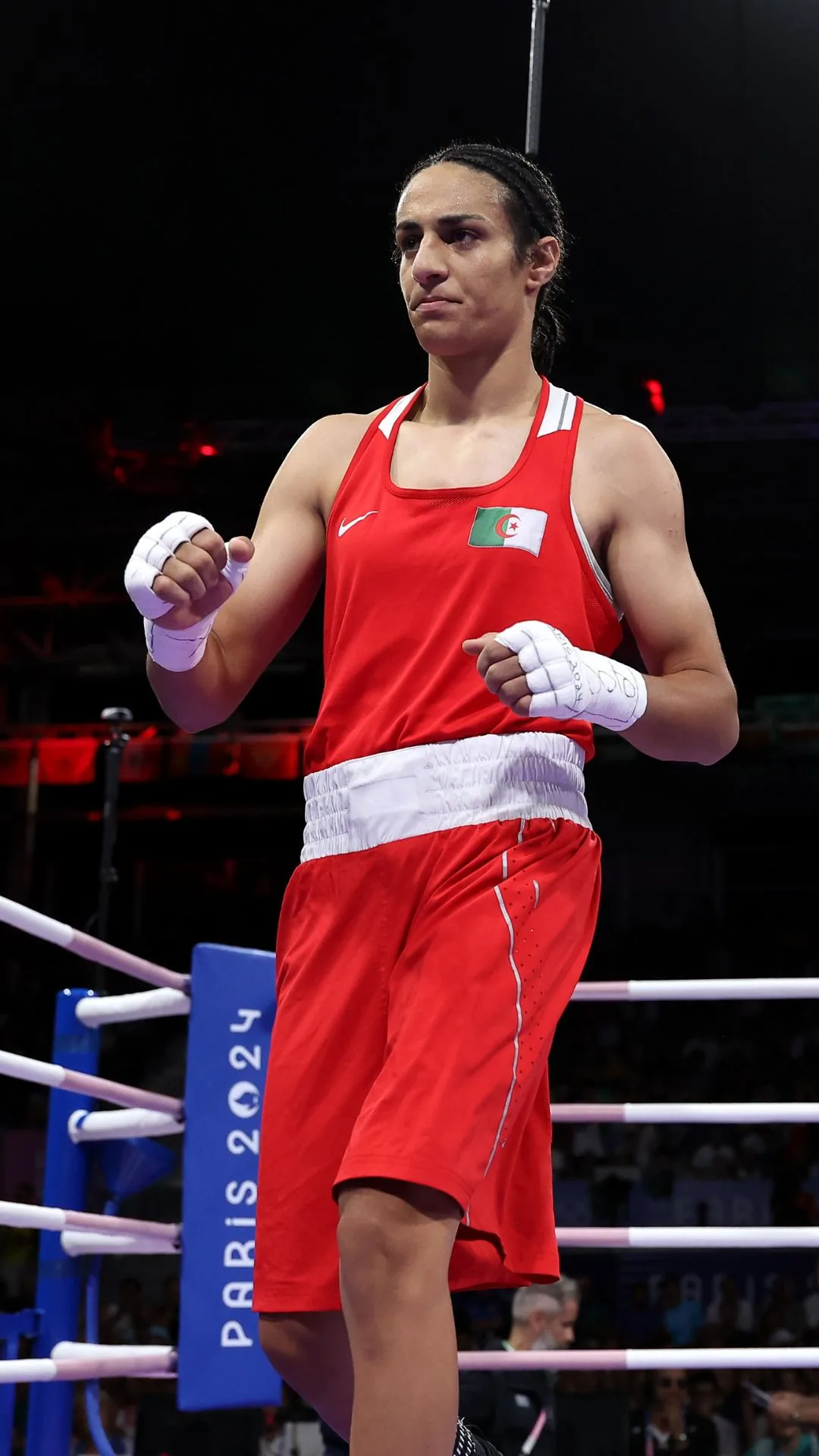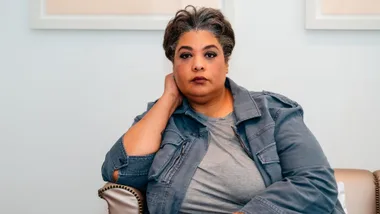If you aren’t entirely familiar with Imane Khelif or Olympic boxing, there’s still a good chance the subject has touched your social media feed some time over the past 48 hours. Khelif in particular has become the centre of the Paris Olympics’ most frenzied controversy. (Yes, bigger than the Olympic competitor who was convicted of raping a 12-year-old girl.)
It all started when Italian boxer Angela Carini forfeited her match against Algerian Imane Khelif within 46 seconds. Carini, who refused to shake her opponent’s hand and cried “it’s not fair” to her team. For those who weren’t aware of what she meant, Imane’s next opponent, Hungarian Anna Luca Hamori, was much more direct. Ahead of her match, she shared a series of extremely transphobic posts calling Khelif a ‘man’ and positioning her as a beast. In the days following, a blaze of news media and a few unfortunately loud voices on Instagram and TikTok came forth to fuel the fire and share their opinions—rife with misinformation—about Imane. Among those was Harry Potter author JK Rowling, whose problematic history of commentary on trans issues has been well documented.

“A young female boxer has just had everything she’s worked and trained for snatched away because you allowed a male to get in the ring with her,” Rowling levelled at the International Olympic Committee. “You’re a disgrace, your ‘safeguarding’ is a joke and #Paris24 will be forever tarnished by the brutal injustice done to Carini.”
The kicker in this controversy is that Khelif is just a woman. An incredibly talented woman, but a woman. She is not transgender, she was not born with male sex organs. Despite a lot of misinformed news that she was disqualified from another tournament for allegedly having an XY chromosome, the International Olympic Committee (IOC) has debunked these gender-testing methods as “illegitimate” and thrown their full defence behind Khelif. She was born and raised, and remains a woman.
So, how did we get here?
Unfortunately, Khelif’s treatment is the complete convergence of ‘white feminism’—a type of ‘feminism’ that ignores broader power imbalances of class, race, gender diversity and more, to focus single-mindedly on the ‘battle of the sexes’. Over the course of a few days, we’ve seen how racism, transphobia and misogyny has led to the most inflammatory attacks on a woman who, in reality, was just really good at boxing.
Starting with transphobia: Even though Khelif is not trans, she has found herself at the receiving end of the vile rhetoric too-often levelled against the trans and gender diverse community. While I’m tempted to throw my hands in the air and say, “but it makes no sense” (which it doesn’t really, given—once again—Khelif is not trans), it is still transphobic. Not only do these arguments uphold any notion that being trans is ‘wrong’, it inflames those existing wounds for the trans community, reigniting the already damaging and frustrating tensions around gender and sport that, frankly, shouldn’t have a place in this chat.

This brings us to racism and misogyny. Khelif is a brown woman from Algeria. Any misguided ideas about Khelif’s gender come back to people deeming her appearance ‘unacceptable’ in relation to her gender. Critics have specifically used the feminine optics of her competitors, Carini and Hamori, to demonise Khelif. Amid the social media rampage, an American model shared a bikini photo of Hamori—posed seductively by a pool, blonde hair flowing—alongside the caption, “This is the girl who is fighting the male boxer tomorrow”. Meanwhile, JK Rowling has shared post after post of Khelif beside a crying Carini, hoping the visual could somehow support her argument that the power balance between these two Olympic-level boxers is somehow off. Once upon a time, the same accusations were levelled at Serena and Venus Williams, whose bodies were also deemed ‘unacceptable’ but their racist/misogynist detractors. The subtext of their abuse and Khelif’s is the same. How dare they not posses the Victoria’s Secret-style frames made desirable by a patriarchal media complex? How dare they threaten our obviously-fragile system of arbitrary gender identification?
While I’m glad to see many people coming to the defence of Khelif on my own social media feed, I’m devastated that misinformation has continued to run rife across all platforms and many mainstream media outlets. I’m disappointed that there’s a good chance I’m only seeing this part of the argument because an algorithm wants me to, and that those who could benefit from it will never see it. But mostly I’m infuriated that, by existing in a body that isn’t white, and by daring to be brilliant at her sport, Imane felt so threatening to her competitors that this is the approach they took. I’m furious that this is the hate campaign they took, one they knew would be validated by a culture that insists gender expression look and be just one way.
The arguments against Khelif are non-sensical, but more than that, they are damaging to all of us in some way. They represent our body image struggles, our race relations, our freedom of self expression, the difficulties of all women in sport, and really most women, who, like Khelif, have struggled to be heard or seen in public discourse. But this is particularly risky for Khelif, who now faces risks to her safety at a global level because of this conversation.
In the words of Jameela Jamil, “I hope Imane is ok. And then when she feels better, I hope she sues the living hell out of everyone with a big platform who incited hatred against her using misinformation.”










